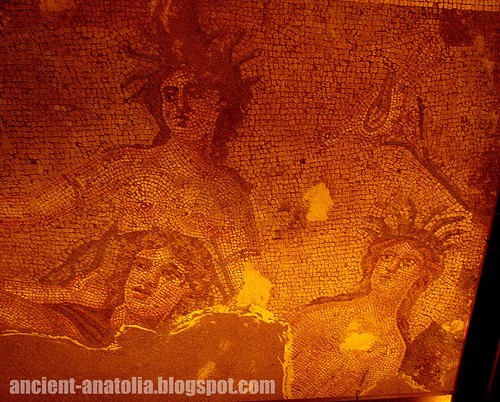
Hylas Kidnapped by the Nymphs, originally uploaded by voyageAnatolia.blogspot.com. Ancient Roman Mosaic at Alanya Museum of Archaeology, Turkey.
In Greek mythology, Hylas' (Greek: Ὕλας) was the son of King Theiodamas of the Dryopians. Other sources such as Ovid state that Hylas' father was Heracles and his mother was the nymph Melite, or that his mother was the wife of Theiodamus, whose adulterous affair with Heracles caused the war between him and her husband. He gained his beauty from his divine mother and his military prowess from his demigod father.
After Heracles killed Theiodamus in battle for his son, Hylas, he took the boy on as arms bearer, taught him the ways of a warrior, and in time the two fell in love.
Heracles took Hylas with him on the Argo, making him one of the Argonauts. Hylas was kidnapped by the nymph of the spring of Pegae, (Dryope), that fell in love with him in Mysia and vanished without a trace (Apollonius Rhodios). Heracles was heartbroken. He along with Polyphemus (not the cyclops Polyphemus) searched for a long time. The ship set sail without them. They never found Hylas because he had fallen in love with the nymphs and remained "to share their power and their love." (Gaius Valerius Flaccus, Argonautica)
In Greek mythology, Dryope (Δρυόπη) was the daughter of Dryops ("oak-man") or of Eurytus (and hence half-sister to Iole). She was sometimes thought of as one of the Pleiades. There are two stories of her metamorphosis into a black poplar. Wikipedia